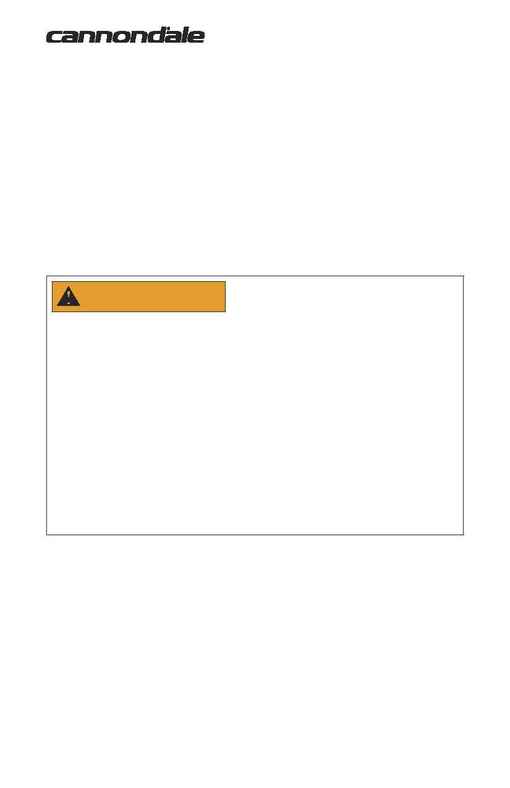
10
Tire Selection
When selecting replacement tires, be sure that the properly installed and inflated
tire does not contact any part of the swingarm, frame, or fork and throughout full
suspension travel. The U.S. Consumer Product Safety Commission (CPSC) requires
at least 1/16" (1.6 mm) tire clearance from any part of the bike. Allowing for lateral
rim flex and for untrue (wobbly) rims will likely mean choosing a rear tire that
provides even more clearance than the CPSC recommends. Your choice of a new
front tire should be made only after considering the clearance guidelines contained
in your front suspension fork owner's manual. If your manual contains no such
guidelines, or if don't have a manual, consider that Rock Shox requires at least 1/4"
(5 mm) clearance between the tire and the fork crown or bridge when the fork
is completely compressed. Be aware that completely compressing the fork may
involve removing the spring stack, letting the air out of the fork, or both.
WARNING
SELECT PROPERLY SIZED/ FITTED TIRES FOR YOUR BIKE
Mounting the wrong size tires on your bike can increase the chances that you
will have an accident where you can be severely injured, paralyzed, or killed. If the
tires touch the frame or fork when riding, you can lose control of your bike. If the
a moving tire is stopped because it touches the frame or fork, you can be thrown
off the bike. You can be severely injured or killed.
Do not mount oversized tires, ones that rub or touch the frame, ones that result
in too little clearance with the frame, or ones that can touch the frame or fork
when the suspension is fully compressed or when riding.
Take care that the tires you select are compatible with your bike's frame design.
Also, be sure to follow the manufacturer's recommendations of your front fork
and rear shocks.
Ask your Cannondale Dealer for the right tires for your bike and its particular
components!
